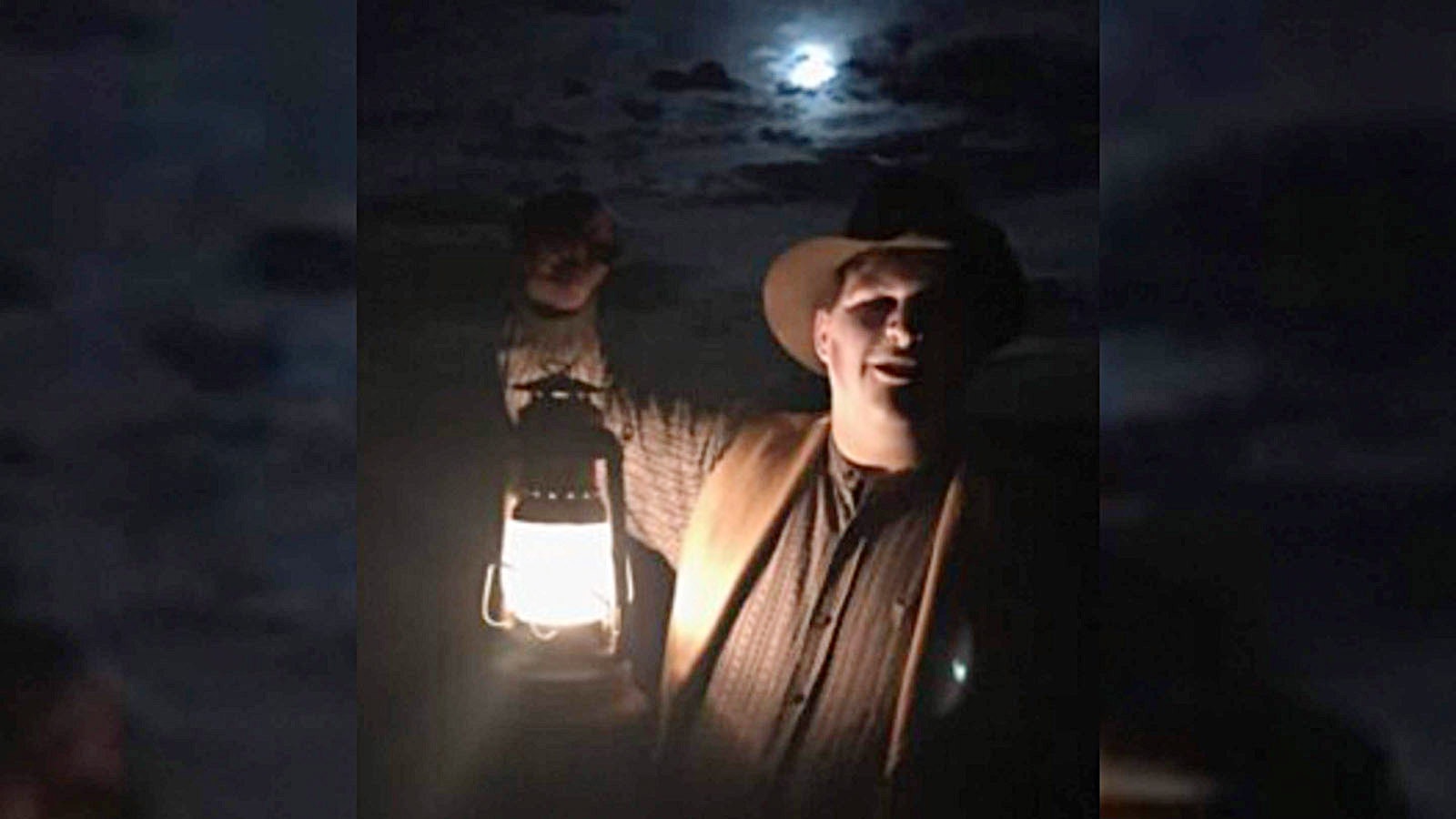By Wendy Corr, Cowboy State Daily
wendy@cowboystatedaily.com
By lamplight, it’s easy to imagine the unease felt by those stationed at the remote outpost of Fort Phil Kearny in the dangerous years of the Indian Wars along the infamous route that became known as the “Bloody” Bozeman Trail.
That experience is re-enacted annually at what remains of the fort between Buffalo and Sheridan.
Staff at the Fort Phil Kearny historic site are hosting Full Moon Fort guided lantern tours Oct. 7 and 8, taking visitors back in time to 1866-68, when the fort protected freighters, gold prospectors and other travelers along the Bozeman Trail.
“Fort Phil was only there for two years,” said Sharie Shada, superintendent at the Fort Phil Kearny State Historic Site. “But it was such a pivotal part of history. And this was 10 years before the Battle of Little Bighorn. It’s the same tribal members fighting the Army at the fort as were fighting (Gen. George) Custer 10 years later.”

Short, Bloody History
Two major skirmishes of the Indian Wars took place near Fort Phil Kearny. The Fetterman Fight in December 1866 was particularly bloody – all 80 men under the command of Capt. William Fetterman were killed by Cheyenne, Arapaho and Lakota warriors. And in August 1867, 32 woodcutters and guards were attacked by the forces of Oglala Chief Red Cloud, but held them off with only minimal casualties in the later-named Wagon Box Fight.
Just a year after the Wagon Box Fight, the Treaty of Fort Laramie was signed and troops left Fort Phil Kearny. The tribes then burned the fort to the ground.
Fort Phil Kearny was named to the National Register of Historic Places in 1960. The only reminders of the two years of bloody conflict are trails that lead visitors to the battlegrounds and interpretive signs that explain events from the perspectives of both the military and Native Americans.
“The Army … didn’t really have permission from the native tribes. They thought they had a treaty and everything was cool when they got there. And it turns out, uh, no. These people don’t want them here.”
Sharie Shada, Fort Phil Kearny State Historic Site Superintendent
Safety Along the Trail
Fort Phil Kearny was the largest of three forts built along the Bozeman Trail, along with Fort Reno (northwest of what is now Kaycee) and Fort C.F. Smith (in southern Montana). Established July 15, 1866 ,near present-day Story, its purpose was to provide protection from attack by Plains Indians, who were wary of pioneers and the military who were steadily encroaching on their lands.
“The Army … didn’t really have permission from the native tribes,” Shada told Cowboy State Daily. “They thought they had a treaty and everything was cool when they got there. And it turns out, uh, no. These people don’t want them here.”
Shada said that nearly every day for two years, soldiers and pioneers were involved in skirmishes with Lakota, Northern Cheyenne and Arapaho warriors.
“These were people trying to get the soldiers off their land and deter people from using the Bozeman Trail,” she said. “And it worked.”
All that’s left of the 17-acre stockade now are reconstructed walls, corner posts and markers that inform visitors where the original buildings stood. Interpretive signs provide clues about how soldiers and civilians lived for those two years before the U.S. government signed the Fort Laramie Treaty of 1868, after which the forts along the Bozeman Trail were abandoned.
The details of daily life at the fort were “pretty gruesome,” Shada said.
“It was a hard, isolated life for people who were not used to that area,” she said. “And they were only there for two years and saw a lot of stuff happen.”


Annual Event
Shada said the Full Moon Fort tours (so named because they are planned around the first full moon in October) help to take people back to that unsettling time in frontier history.
“It just makes it more real and more relatable,” she said.
Shada said the lantern tours were very popular in the six years they were held before weather and the pandemic forced cancellations the last three years, and the October timeline is appropriate for this type of moonlight event.
“You know, it’s a little spooky out there in the dark,” she said.
Shada said the experience will be heightened by local actors who will help play out the story.
“We are partnering up again with the Trident Theatre Company out of Sheridan,” she said. “We’re using them to help really get the audience engaged, draw them in and make them feel a part of the story.”
Shada said the Sheridan theater troupe will act as tour guides, and volunteers with the site’s living history group will act out the scenes each stop along the tour.
“We have 12 tours – six on Friday night and six on Saturday night,” she said. “The 6:30 tours will be toned down a little for our younger audience members; true facts are stated, and it might be a little too much for younger audiences.”
The seventh annual event is open to visitors the evenings of Oct. 7 and 8 from 6:30-9 p.m. Anyone interested in participating can either book online or call 307-684-7629.





